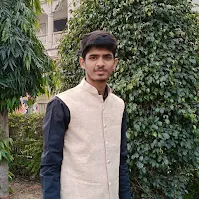Music is a universal language that unifies and transcends all borders. It has the capacity to arouse feelings that no other medium can, providing a powerful tool for promoting unity and team spirit. Regarding tourism, music becomes a powerful catalyst that entices individuals to travel to other countries to experience different rhythms of their lands. With its rich and diverse musical heritage, India stands ready to exploit this opportunity by inviting the world to discover its soundscapes.
India’s musical tradition comprises classical ragas, peppy folk tunes, and fusion genres. In addition to showcasing cultural richness, this diversity attracts tourists. Imagine a European traveler who falls in love with the melodies of the sitar; he decides to travel all the way to Varanasi to watch a live performance by a maestro. These are not imaginary tours—they have happened before, driven by the magnetism of music.
One enigmatic instance is the Rajasthan International Folk Festival (RIFF) held annually in Jodhpur. It attracts music enthusiasts from various parts of the world who are interested in experiencing traditional Rajasthani folk music. The collaboration of international musicians and musicians from within the country demonstrates that music can unite people despite geographical differences. Similarly, the Sunburn Festival in Goa, now the largest Electronic Dance Music festival in Asia, showcases the modern taste of Indian music.
This paper suggests strategic measures to help India fully realize music's potential in promoting tourism. One concept is to create music tourism routes, where tourists follow the music through distinct geographical areas. For instance, a classical music trail could involve captivating destinations such as Chennai, known for Carnatic music; Kolkata, famous for Rabindra Sangeet; and Pune, renowned for the Sawai Gandharva Bhimsen Mahotsav. Such curated experiences would provide deeper insight into the musical and cultural experience of India.
The involvement of young people should not be ignored in these projects. The youngest generation of tourists today expects more than just beautiful landscapes or exotic food. They can help convey the richness of music tourism through social media sharing of personal experiences. Social media, coupled with young artists and tourists, could build a community to promote Indian music. For instance, virtual reality exposure to Indian music festivals or apps with event information could increase the attractiveness.
Additionally, India can adapt to and use the technologically advanced world to enhance the music tourism industry. Virtual tours, live streaming of shows and concerts, and archiving can help create a large audience for music festivals worldwide. Partnering with international singers and artists can put the Indian music scene in focus, attracting tourists who wouldn’t mind traveling to India for such experiences. Thus, the marketing aspect of music has tremendous scope in enhancing and popularizing tourism in India. By engaging travelers with its varied music, India can touch their hearts as well as their desire for new destinations.
Engaging young people, exploiting technology, and constructing appealing circuits for musical tourism are practical approaches to turning India into a desired global market for music tourism. This will keep the human spirit connected with music and with journeys that join hearts across the world.
India’s musical tradition comprises classical ragas, peppy folk tunes, and fusion genres. In addition to showcasing cultural richness, this diversity attracts tourists. Imagine a European traveler who falls in love with the melodies of the sitar; he decides to travel all the way to Varanasi to watch a live performance by a maestro. These are not imaginary tours—they have happened before, driven by the magnetism of music.
One enigmatic instance is the Rajasthan International Folk Festival (RIFF) held annually in Jodhpur. It attracts music enthusiasts from various parts of the world who are interested in experiencing traditional Rajasthani folk music. The collaboration of international musicians and musicians from within the country demonstrates that music can unite people despite geographical differences. Similarly, the Sunburn Festival in Goa, now the largest Electronic Dance Music festival in Asia, showcases the modern taste of Indian music.
This paper suggests strategic measures to help India fully realize music's potential in promoting tourism. One concept is to create music tourism routes, where tourists follow the music through distinct geographical areas. For instance, a classical music trail could involve captivating destinations such as Chennai, known for Carnatic music; Kolkata, famous for Rabindra Sangeet; and Pune, renowned for the Sawai Gandharva Bhimsen Mahotsav. Such curated experiences would provide deeper insight into the musical and cultural experience of India.
The involvement of young people should not be ignored in these projects. The youngest generation of tourists today expects more than just beautiful landscapes or exotic food. They can help convey the richness of music tourism through social media sharing of personal experiences. Social media, coupled with young artists and tourists, could build a community to promote Indian music. For instance, virtual reality exposure to Indian music festivals or apps with event information could increase the attractiveness.
Additionally, India can adapt to and use the technologically advanced world to enhance the music tourism industry. Virtual tours, live streaming of shows and concerts, and archiving can help create a large audience for music festivals worldwide. Partnering with international singers and artists can put the Indian music scene in focus, attracting tourists who wouldn’t mind traveling to India for such experiences. Thus, the marketing aspect of music has tremendous scope in enhancing and popularizing tourism in India. By engaging travelers with its varied music, India can touch their hearts as well as their desire for new destinations.
Engaging young people, exploiting technology, and constructing appealing circuits for musical tourism are practical approaches to turning India into a desired global market for music tourism. This will keep the human spirit connected with music and with journeys that join hearts across the world.

.jpg)

.jpg)
